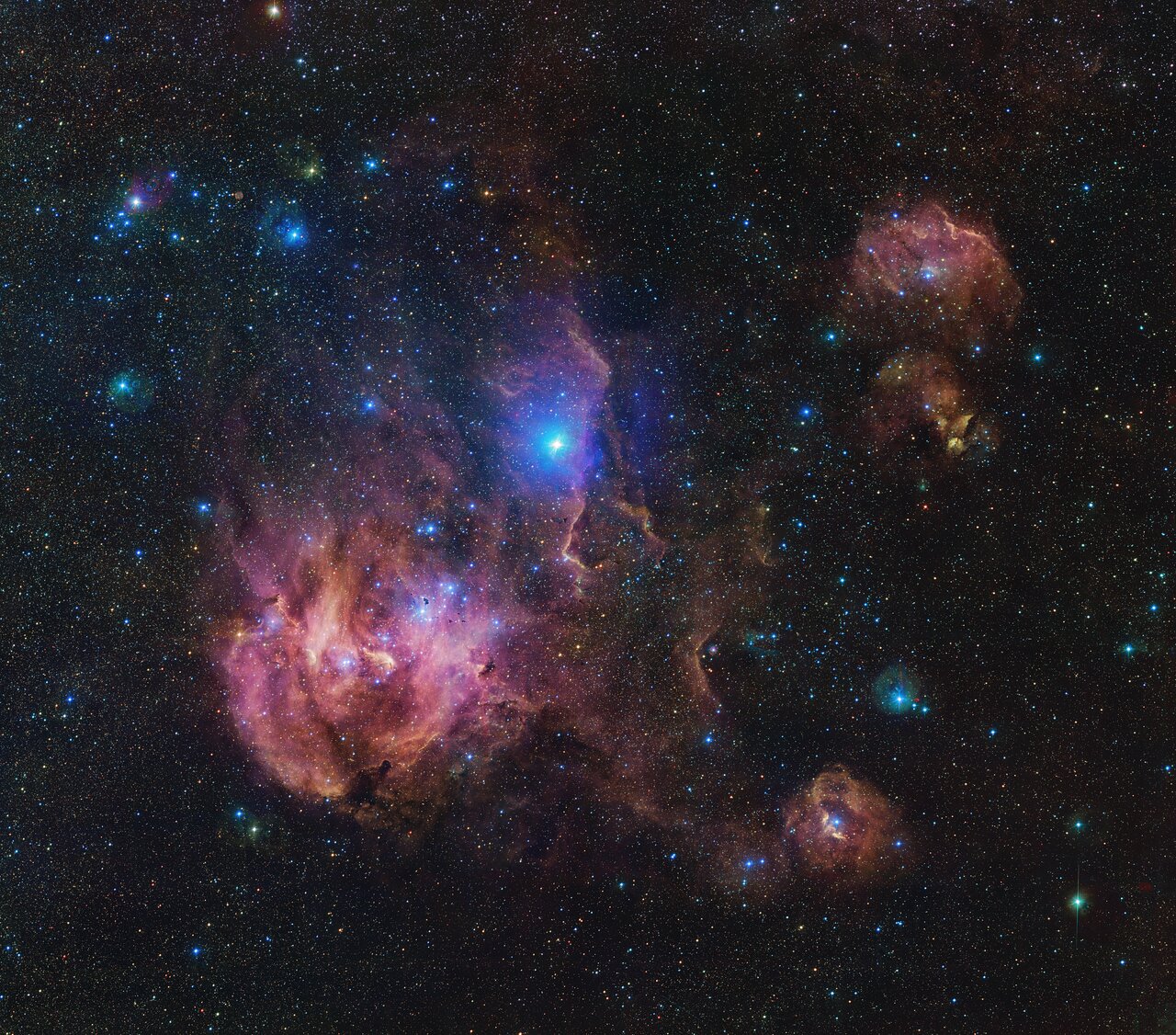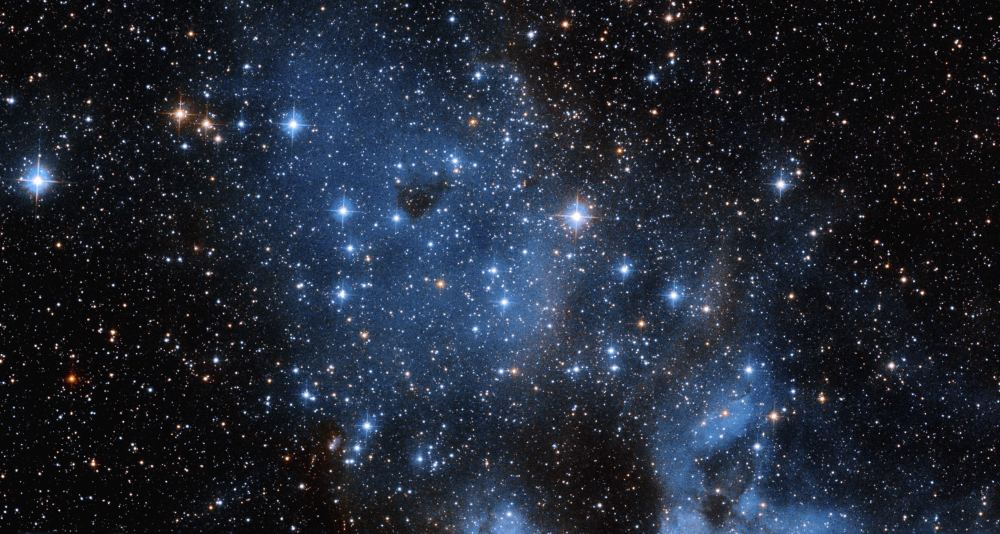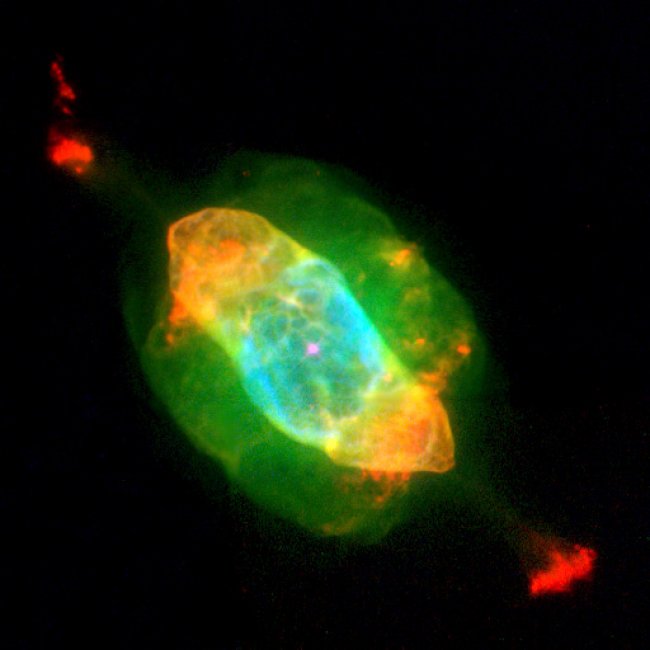If you think that breaking all the rules is cool, then you’ll appreciate one of the latest observations submitted by the Danish 1.54 meter telescope housed at ESO’s La Silla Observatory in Chile. In this thought-provoking image, you’ll see what kind of mayhem occurs when stars are forged within an interstellar nebula.
Towards the center of the Milky Way in the direction of the constellation of Sagittarius, and approximately 5000 light-years from our solar system, an expansive cloud of gas and dust await. By comparison with other nebulae in the region, this small patch of cosmic fog known as NGC 6559 isn’t as splashy as its nearby companion nebula – the Lagoon (Messier 8). Maybe you’ve seen it with your own eyes and maybe you haven’t. Either way, it is now coming to light for all of us in this incredible image.
Comprised of mainly hydrogen, this ethereal mist is the perfect breeding ground for stellar creation. As areas contained within the cloud gather enough matter, they collapse upon themselves to form new stars. These neophyte stellar objects then energize the surrounding hydrogen gas which remains around them, releasing huge amounts of high energy ultraviolet light. However, it doesn’t stop there. The hydrogen atoms then merge into the mix, creating helium atoms whose energy causes the stars to shine. Brilliant? You bet. The gas then re-emits the energy and something amazing happens… an emission nebula is created.
Loading player…
This zoom starts with a broad view of the Milky Way. We head in towards the centre, where stars and the pink regions marking star formation nurseries are concentrated. We see the huge gas cloud of the Lagoon Nebula (Messier 8) but finally settle on the smaller nebula NGC 6559. The colourful closing image comes from the Danish 1.54-metre telescope located at ESO’s La Silla Observatory in Chile. Credit: ESO/Nick Risinger (skysurvey.org)/S. Guisard. Music: movetwo
In the center of the image, you can see the vibrant red ribbon of the emission nebula, but that’s not the only thing contained within NGC 6559. Here swarms of solid dust particles also exist. Consisting of tiny bits of heavier elements, such as carbon, iron and silicon, these minute “mirrors” scatter the light in multiple directions. This action causes NGC 6559 to be something more than it first appears to be… now it is also a reflection nebula. It appears to be blue thanks to the magic of a principle known as Rayleigh scattering – where the light is projected more efficiently in shorter wavelengths.
Don’t stop there. NGC 6559 has a dark side, too. Contained within the cloud are sectors where dust totally obscures the light being projected behind them. In the image, these appear as bruises and dark veins seen to the bottom left-hand side and right-hand side. In order to observe what they cloak, astronomers require the use of longer wavelengths of light – ones which wouldn’t be absorbed. If you look closely, you’ll also see a myriad of saffron stars, their coloration and magnitude also effected by the maelstrom of dust.
It’s an incredible portrait of the bedlam which exists inside this very unusual interstellar cloud…
Original Story Source: ESO News Release.





